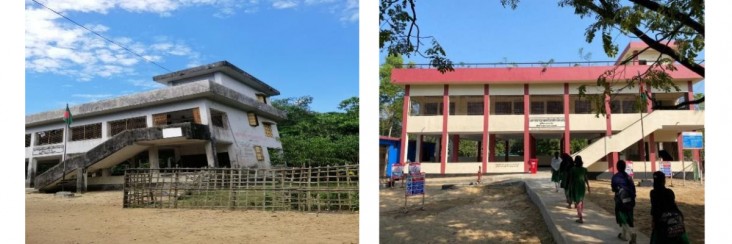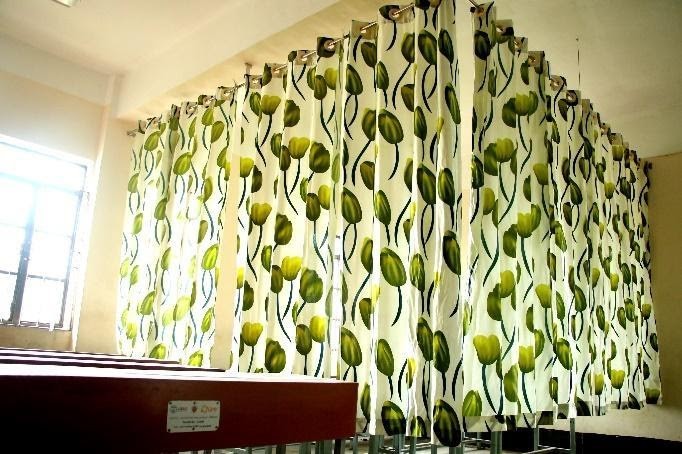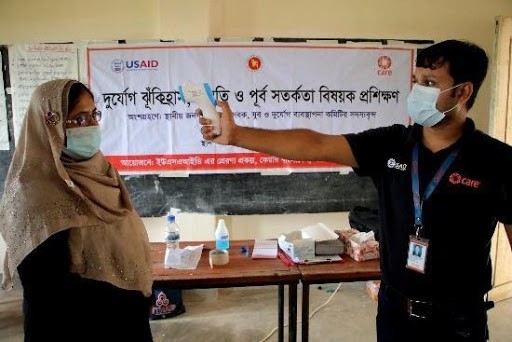Speeches Shim

When it comes to coping well with cyclones and flooding, Bangladesh is doing its best to stop history from repeating itself. And so far, it is working.
On November 8, 2020, Bangladesh is marking the 50th anniversary of the Great Cyclone of 1970, which claimed the lives of at least 300,000 people, many of them women and children. It was arguably the deadliest tropical cyclone in history and among the greatest natural disasters of all time.
Bangladesh is prone to frequent tropical cyclones that form in the Bay of Bengal, affecting mainly the coastal regions of the country. The latest was the powerful Cyclone Amphan that made landfall in May 2020, causing widespread damage and disruption for 2.6 million people across 19 districts.
To their great credit, the people of Bangladesh have learned a great deal about handling the threat of cyclones and have taken action through cyclone preparedness, enhanced hazard early warning systems, and resilient infrastructure where people can confidently seek refuge and weather the storms.
Among the hardest hit areas in Bangladesh’s coastal belt, Cox’s Bazar—which currently shelters some 700,000 Rohingya refugees—experiences regular cyclones causing extensive loss of life and massive property damage.
To help withstand the impact of devastating cyclones, the government and development partners have built approximately 600 multipurpose cyclone shelters in Cox’s Bazar. Doing double-duty between storms, these community shelters serve as primary schools that provide a safe learning environment for students.

Over the years, local officials and residents have noted that many of the existing shelters had been neglected and that poor conditions made the shelters unsuitable for use during an emergency and also did not provide a good learning environment for students between storm seasons.
“There are 650 students studying in my school,” said Momtaj Uddin Ahmed, head teacher at the Panerchara Government Primary School and one of the cyclone shelters. After construction 11 years ago, there had been no repairs or refurbishment. “There are lots of problems related to drinking water, sanitation facilities, waste management, electricity, and connecting roads.”
Responding to this need, the United States Agency for International Development (USAID) funded Promoting Resilience to Risks of Natural Hazards (PRERONA) project, implemented by CARE Bangladesh stepped in to help communities prepare for and be resilient to natural disasters in Cox’s Bazar.
The project team is improving the physical infrastructure of 96 multipurpose cyclone shelters that function as schools as well, meeting the standards set in the Bangladesh Cyclone Shelter Policy, National Building Code, and a Ministry of Primary and Mass Education program. By May 2021, the project plans to provide refuge for over 80,000 people during the cyclone season and accommodate nearly 32,000 students under normal conditions.
All around Cox’s Bazar, residents are taking note of the positive changes. “The people of Maheshkhali, who are extremely prone to disasters, will remember the contribution of PRERONA,” said Asheq Ullah Rafiq, Member of Parliament for Maheshkhali and Kutubdia in Cox’s Bazar. “I am very happy to see the renovation of many multipurpose cyclone shelters for vulnerable community people. These are now ready to use as safe, accessible cyclone shelters and regular schools.”
Feeling safe and having privacy when needed is important, especially to female users. The project took careful consideration of their needs by adding separate rooms for women, breastfeeding corners, and separate women’s and men’s toilets in steps to prevent gender-based violence, as women and girls are disproportionately affected during emergencies.

“During Cyclone Amphan, I went to the closest cyclone shelter and I noticed there were many new changes,” said Tatoli Begum, 37, a shelter user in Ramu. “There was more light than before, the locks on the washroom were working, and I felt all the rooms were cleaner. I felt at ease staying there.”
Ms. Rasheda Begum, a member of the Panerchara Union Parishad and a ward disaster management committee advisor, agrees: “I am very pleased there is a separate space for pregnant women as well as a female corner. This is really important for the comfort of women and girls.”
In addition, the project set up child-friendly water, sanitation, and hygiene facilities and added ramps and wheelchair equipment to ensure that persons with disability, severely ill citizens, and elderly persons are able to access the shelters easily during disasters.
Students and teachers, too, have benefited greatly. “Our school covers Khuruskul union and we have nearly 650 students. To accommodate this huge number of students, furniture as well as appropriate rooms were not available,” said Pulin Kanti, an assistant teacher at the Dakkhin Khuruskul School and cyclone shelter. “The PRERONA project has improved the total learning environment of our school by providing benches, chairs, tables, fans, electricity (solar panel), lights, blackboard and proper ventilation. We really appreciate their quality work.”
Trained Community Volunteers Support Disaster Preparation

Solid shelters are vital, but resilient infrastructure alone—without proper community awareness and planning—cannot fully protect people in emergency situations. To help ensure that residents remain safe, USAID and CARE have also provided training in disaster risk reduction, preparedness, and early warning with the support of ward disaster management committees. Participants are leaving the sessions with life-saving knowledge and good reviews.
At her first disaster preparedness training session at the Peskarpara shelter in Sadar, 23-year-old Arifa Akter learned the role of a volunteer in alerting and mobilizing residents. “I have also understood the importance of having an evacuation map in a community and how to make the community aware of disasters.”
“I have learned the responsibilities of a youth as well as a volunteer during and after a disaster,” noted Imran Hasan, 25, at the Kolatoli shelter. “I now know disaster-related guidelines, a contingency plan for a community, the necessity of a social map, and how to support persons with disability during a disaster.”
Working together and with USAID support, informed community members and disaster managers are increasingly able to prepare citizens in advance of an impending storm, and guide them safely to secure refuge at cyclone shelters.

Comment
Make a general inquiry or suggest an improvement.